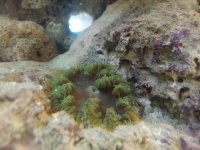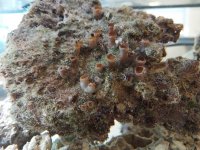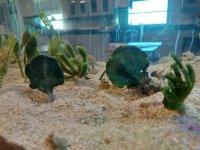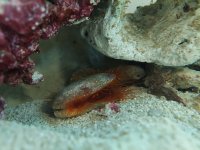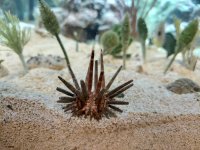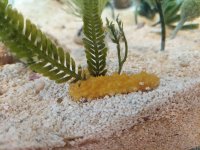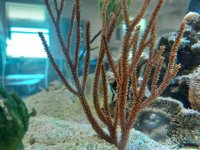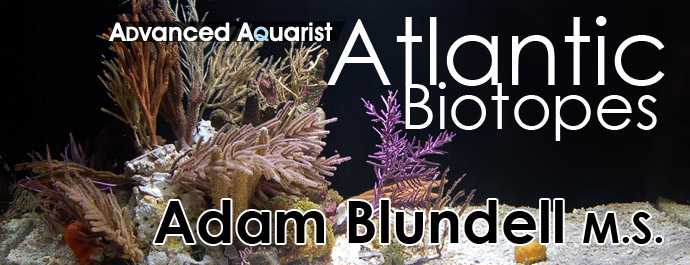Prof.Ellie
Reefer
Hello Everyone,
I am trying a project in a high school "aquatic science" class. I am constructing biotopes. The freshwater biotopes have been relatively easy and predictable (except one.... but we wont get into that).
I have two salt-water set-ups. A large 125 gallon and a 29 gallon biocube (mind you all I had these donated so.... they are not in the best shape... my biocube doesn't have its original light, not sure if it was upgraded or downgraded).
I need two distinct ecosystems in these tanks. They need to be hardy., or at least newb friendly. We check water quality weekly. We have dedicated maintenance days every other week (this includes water changes/gravel cleaning/etc.). We do small water changes as needed (due to evaporation).
We have had some success with ricordia, but our damsel and clownfish keeps picking at them so all the soft coral we have (not a lot) has been moved to the small aquarium.
Recommendations? I did get a small grant to for the project so I need to spend the money as wisely as I can.
We had microalgae (but they all died... pretty sure they were eaten by crabs.... I really messed up these aquariums everyone).
Help!
What I have right now altogether: 1 adult clownfish, 1 adult velvet damsel, 1 baby clownfish, 1 dwarf angelfish (bi-color), 1 rock beauty, 1 multiple-mouth ricordia, 1 tiny frag of star polyp (they are growing though!), 2 tiny frags of zooanthids, 1 rock of zooanthids (they don't look so good), 3 dying mermaid fans, 1 mangrove jelly (doesn't look so good), 4 rock anemone (they are great!), 1 flame scallop (awesome!), 1 pink-Haitian anemone (angry...). over 150lbs of live rock (many variations, some fiji rocks that are really neat), plethora of large/small snails, astrea, turbo, nerite (which I hate because they lay eggs EVERYWHERE!), 3 types of hermit crags (20 of them), 5 emerald crabs, 1 sea cucumber. 1 pencil sea urchin, 1 black sea urchin, purple **Gorgonian** coral (slowly browning), orange **Gorgonian** coral (doing ok).
*recently deceased: hairy chiton, horseshoe crab, large mangrove jelly, many snails/crabs, 1 butterfly fish, 3 ricordia (we have learned we must glue them down or they will be carried away and lost), 6 dwarf seahorse and all their babies (that was a very sad couple of days in the class).
I feel with what I have I have messed up any opportunity I had of creating two unique ecosystems. Would it be worth giving somethings up and focus on something new?
Cheers,
A frustrated science teacher......
I am trying a project in a high school "aquatic science" class. I am constructing biotopes. The freshwater biotopes have been relatively easy and predictable (except one.... but we wont get into that).
I have two salt-water set-ups. A large 125 gallon and a 29 gallon biocube (mind you all I had these donated so.... they are not in the best shape... my biocube doesn't have its original light, not sure if it was upgraded or downgraded).
I need two distinct ecosystems in these tanks. They need to be hardy., or at least newb friendly. We check water quality weekly. We have dedicated maintenance days every other week (this includes water changes/gravel cleaning/etc.). We do small water changes as needed (due to evaporation).
We have had some success with ricordia, but our damsel and clownfish keeps picking at them so all the soft coral we have (not a lot) has been moved to the small aquarium.
Recommendations? I did get a small grant to for the project so I need to spend the money as wisely as I can.
We had microalgae (but they all died... pretty sure they were eaten by crabs.... I really messed up these aquariums everyone).
Help!
What I have right now altogether: 1 adult clownfish, 1 adult velvet damsel, 1 baby clownfish, 1 dwarf angelfish (bi-color), 1 rock beauty, 1 multiple-mouth ricordia, 1 tiny frag of star polyp (they are growing though!), 2 tiny frags of zooanthids, 1 rock of zooanthids (they don't look so good), 3 dying mermaid fans, 1 mangrove jelly (doesn't look so good), 4 rock anemone (they are great!), 1 flame scallop (awesome!), 1 pink-Haitian anemone (angry...). over 150lbs of live rock (many variations, some fiji rocks that are really neat), plethora of large/small snails, astrea, turbo, nerite (which I hate because they lay eggs EVERYWHERE!), 3 types of hermit crags (20 of them), 5 emerald crabs, 1 sea cucumber. 1 pencil sea urchin, 1 black sea urchin, purple **Gorgonian** coral (slowly browning), orange **Gorgonian** coral (doing ok).
*recently deceased: hairy chiton, horseshoe crab, large mangrove jelly, many snails/crabs, 1 butterfly fish, 3 ricordia (we have learned we must glue them down or they will be carried away and lost), 6 dwarf seahorse and all their babies (that was a very sad couple of days in the class).
I feel with what I have I have messed up any opportunity I had of creating two unique ecosystems. Would it be worth giving somethings up and focus on something new?
Cheers,
A frustrated science teacher......
Last edited:




